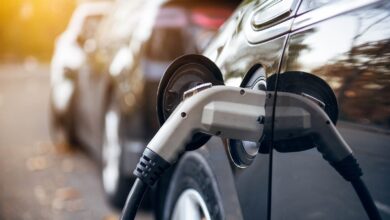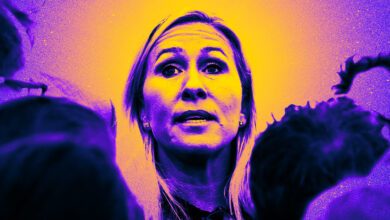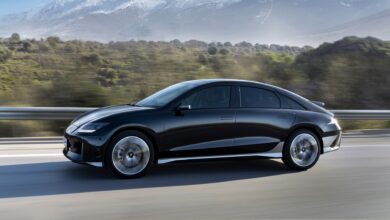Elon Musk’s Supercharger Chaos Could Slow The EV Transition. But It Doesn’t Have To.
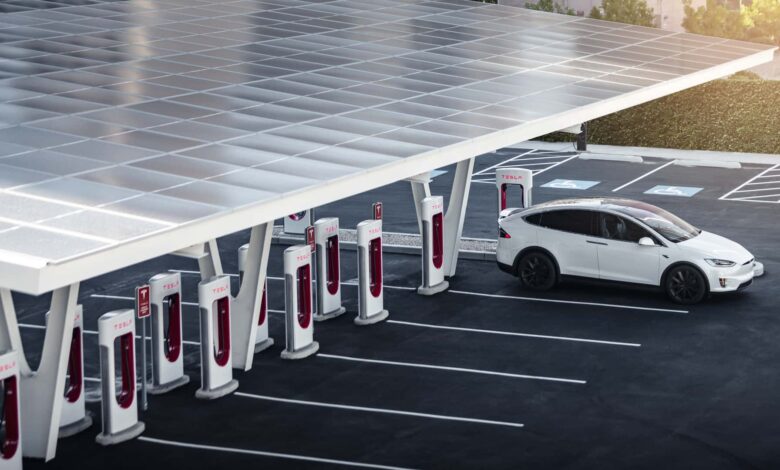
Tesla is pumping the brakes on EV charging. That creates opportunities for competitors, industry analysts told InsideEVs.
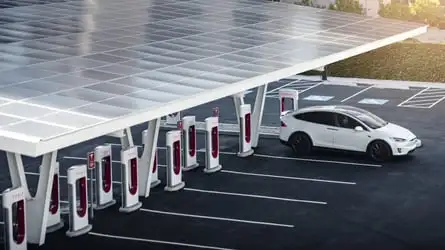
Earlier this week, Elon Musk woke up and chose violence. More than usual. On Tuesday, he laid off seemingly all of Tesla’s electric vehicle charging division and said the automaker would drastically slow down its rollout of new Supercharger stations.
It came as a shock to hundreds of employees, including top charging executives, who found out they were laid off via a cold, late-night email. It casts a cloud of uncertainty over other automakers’ ongoing plans to integrate Tesla’s charging connector design into their cars and give customers access to the vast Supercharger network. It barely makes sense for Tesla itself, which long boasted the best charging network around as a major selling point. Why retreat so severely from an industry it handily dominates, and one that it makes good money at?
Tesla pumps the brakes on Supercharging
This week, Elon Musk suddenly laid off Tesla’s entire Supercharger division. Tesla operates the largest and, according to many, best EV charging network in the country. Now it’s slowing down the rollout of new stations during a time when anxiety around charging is keeping people from buying EVs.
More broadly, selling the public on EVs necessitates installing more chargers, not fewer. Anxiety around charging—where to do it, how long it takes, etc.—remains one of the top deterrents keeping people from ditching fossil fuels. News that the country’s biggest charging network is pumping the brakes on expansion and cleaning house could give car buyers even more pause, industry analysts say. Especially given that negative headlines around the health of Tesla and the EV industry at large have swirled for months now.
“It’s just more noise and a reason to say ‘No,’” Loren McDonald, CEO of the EV industry consultancy EVAdoption, told InsideEVs. “In the end, that could be the biggest impact of this.”
But in reality, McDonald says, it’s just noise. Realistically, Tesla slowing down on charger deployment shouldn’t scare away potential EV buyers for a few reasons.
Get in touch.
If you were impacted by Tesla’s recent layoffs, or have information to share, contact the author at tim.levin@insideevs.com from a non-work device. We are happy to speak anonymously and securely.
Tesla isn’t throwing in the towel completely, according to a tweet from Musk. (In a testament to Tesla’s unparalleled weirdness, the billionaire’s X account serves as both a reliable source of right-wing memes and the company’s de facto press office.) Rather, he says Tesla will focus on expanding current station locations over erecting new ones. So there’s still some growth planned, just not nearly as much.
Moreover, Tesla has already built out a vast network of fast chargers where most EV buyers live, McDonald said. Tesla began investing in charging infrastructure more than a decade ago to ensure its earliest customers could conveniently refuel. Today, it dwarfs rival charging networks.
BP is among many companies making large investments in EV charging.
Tesla’s move could hurt the uptake of electric cars given the public’s hesitancy around charging, said Corey Cantor, an EV analyst at BloombergNEF. But it also creates opportunities for competitors who could never have dreamed of taking on the Supercharger empire before.
“I think that in the short term, it definitely can harm. In the long term, it doesn’t have to,” Cantor said. “It really depends on what people step up and do at these different companies.”
McDonald, who advises charging companies, also sees an opening for Tesla’s rivals. With Tesla seemingly retreating, other charging firms may see better utilization of their new chargers and less competition for prime real estate, he said. Fast-charging is a “horrendous business,” he said, since the up-front investments are so high (he ballparks it at $1 million per station) and it takes four or five years for a location to break even. Tesla’s retreat could make things that much easier.
He said it’s possible that other EV charging firms will accelerate their investments. Companies from Walmart to BP to Ionna, a new charging firm created by seven large automakers, are already planning big investments in EV charging to meet growing demand. Not to mention, hundreds of the most skilled people in the business are now looking for work.
Some firms are already swooping in to pick up where Tesla left off. Revel, the ride-hailing and EV infrastructure startup, is considering locations in New York that Tesla recently backed out of. “Tesla has left some really good sites on the table,” Frank Reig, Revel’s CEO and co-founder, told InsideEVs in a recent interview.
Revel, which operates charging stations in New York City, is looking at sites that Tesla has abandoned.
McDonald said that one of his clients, which ranks among the country’s largest charging operators, asked him for a list of sites Tesla won funding for through the Biden Administration’s National Electric Vehicle Infrastructure (NEVI) program. Tesla could pull out of those projects, releasing millions of dollars in funding. That funding would then go to other bidders.
To be sure, there are also legitimate reasons for concern among EV owners and future buyers. Ex-Tesla employees told InsideEVs that the layoffs could deal a blow to the Supercharger network’s legendary reliability. Non-Tesla chargers are often broken or clunky to use, but Superchargers seem to just work.
Ford was the first automaker to strike a deal to use Tesla’s chargers, and access (via an adapter) opened in March.
Most automakers have struck deals with Tesla to switch over to the Tesla-designed North American Charging Standard (NACS) for their future vehicles. That would give their customers access to some 15,000 Tesla Supercharger stalls they couldn’t use before. Now that Tesla’s charging division is effectively dissolved, it’s unclear how smooth that transition will be; there are countless software integration hurdles to be cleared there alone. Will Volkswagen, Ford and Chevrolet owners be able to seamlessly use Superchargers in the near term? That new selling point for buying an EV is now a big fat question mark.
And even if other players step up, filling the vacuum in growth that Tesla is leaving behind will be a massive undertaking. Tesla has consistently installed more plugs than all U.S. rivals combined. BloombergNEF estimates that by 2030 North America will need 400,000 high-powered chargers to serve a fleet of 40 million battery-powered vehicles. The country is nowhere close to that yet, and Tesla’s move certainly doesn’t help.
Contact the author: tim.levin@insideevs.com
Read more

